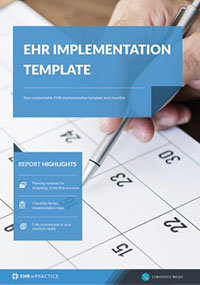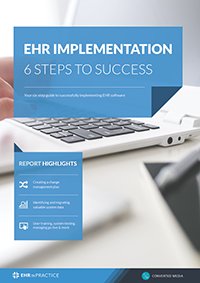3 ways EHR data improves patient care
Besides meeting insurance regulations for documentation and billing, EHR systems can greatly improve patient care. The driving factor behind this improvement is often due to the quality of EHR data which can be utilized in a way that paper records could not.
1) Identifying “red flags” and compiling patient education information
EHR systems can readily identify lab values, measurements, and trending objective EHR data that may be considered a “red flag.” These objective measures can be easily compiled into a patient summary report and more easily discussed with a patient and their family. In addition, abnormal values can be tracked overtime in order to identify if an individual is trending in a positive or negative manner. By generating a report on lab values for cholesterol over the course of a year, the physician can more easily determine if a specific pharmacologic intervention is working or if the individual has made appropriate lifestyle changes to improve his health.
2) Using EHR data to measure and create meaningful outcome summaries
With EHR systems, measureable outcomes can be easily calculated and shared with patients and referring physicians. When utilizing standardized outcome measurement tools (such as patient questionnaires, functional outcome measures, or pain measures), clinicians can generate a report and analyze pre- and post- intervention outcomes for comparison. These outcomes can be used to educate patients and their family members on progress and can be shared with other clinicians. For example, in physical therapy outcome measurement tools are often used to identify fall risk. A patient’s risk of falling can be identified as high, medium or low depending on how they score on specific functional tasks. If a patient was identified as a high fall risk and then improves their gait and balance substantially to now measure as a low fall risk, the information can be highly motivating.
Recommended Reading: EHR Vendor Directory - Find vendors with the software to build the correct EHR data for your practice
3) EHR data can facilitate real time billing and claims processing
Real-time EHR data improves patient care by providing a means for instant billing and processing of claims. The clinician typically inputs billing charges in real time, when submitting the encounter note. This means there is no delay in submitting charges and patients can anticipate when their insurance will be billed. Greater efficiency in billing will lead to happier patients. Your practice will be viewed as efficient and ethical if claims are submitted at the date of service and not several weeks later. As a bonus, your practice will likely receive payments more promptly in comparison to when claims were submitted prior to EHR.
The beauty of an EHR system integration is that data can be more readily pooled, analyzed and utilized to improve efficiency and processes in your practice. This will lead to greater patient and clinician satisfaction.
Free white paper

EHR Vendor Directory
Get the most up-to-date directory of EHR software vendors. Find the best software for your practice.

Featured white papers
-

EHR Implementation Template
Get all the planning tools you need to make your EHR implementation a success
Download -

EHR implementation: 6 steps to success
Step-by-step information on how to implement EHR effectively
Download -

EHR Vendor Directory
Get the most up-to-date directory of EHR software vendors. Find the best software for your practice.
Download
Related articles
-

EHR Implementation Plan: Your 8-Step Checklist
Your comprehensive checklist for creating an EHR implementation plan.
-

A template for your EHR project implementation timeline
Determining your EHR project timeline will prove tricky, but having some expectations of time fra...
-

Top free EHR software systems
What open-source EHR is, and the top free EHR systems on the market

